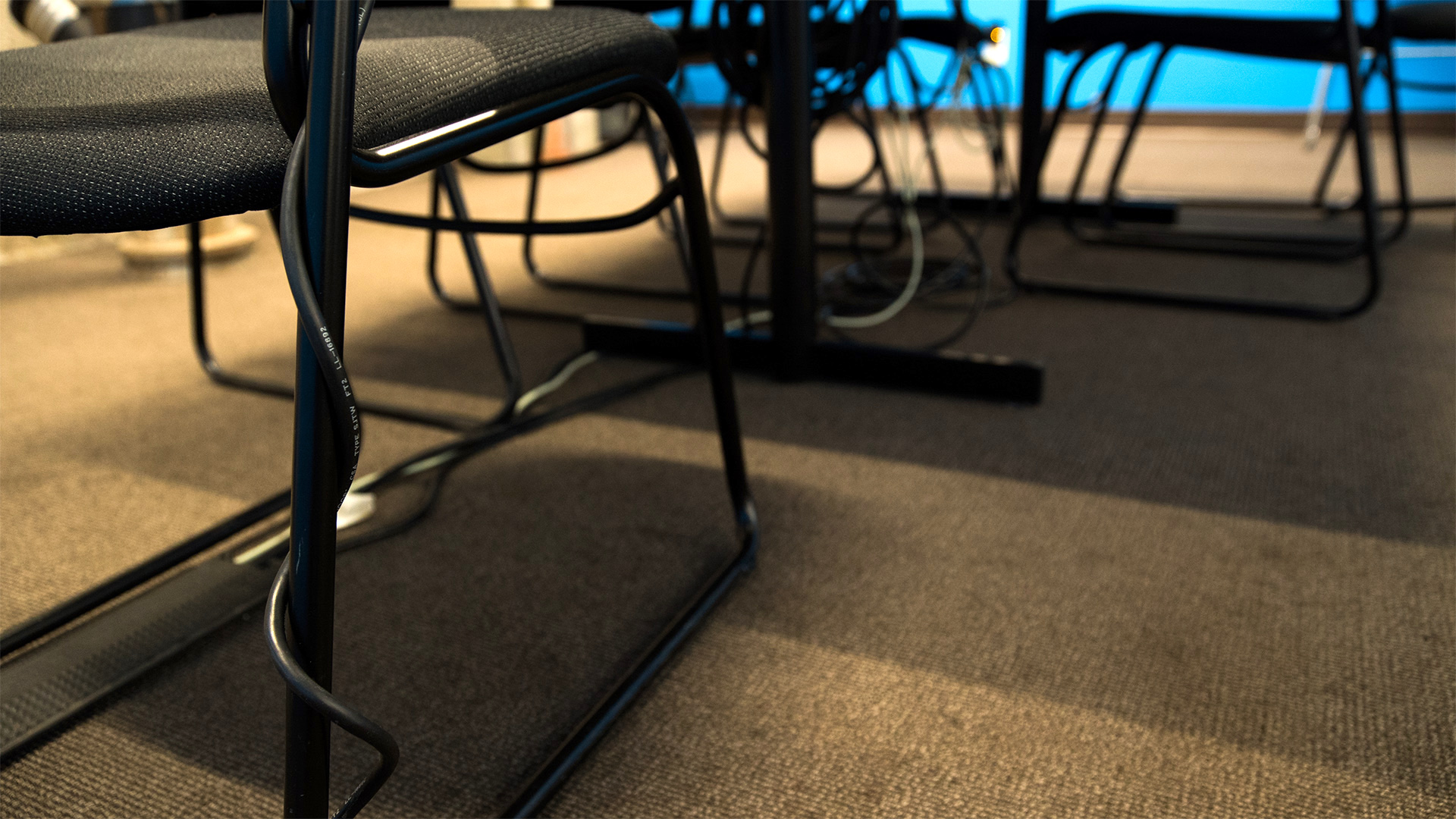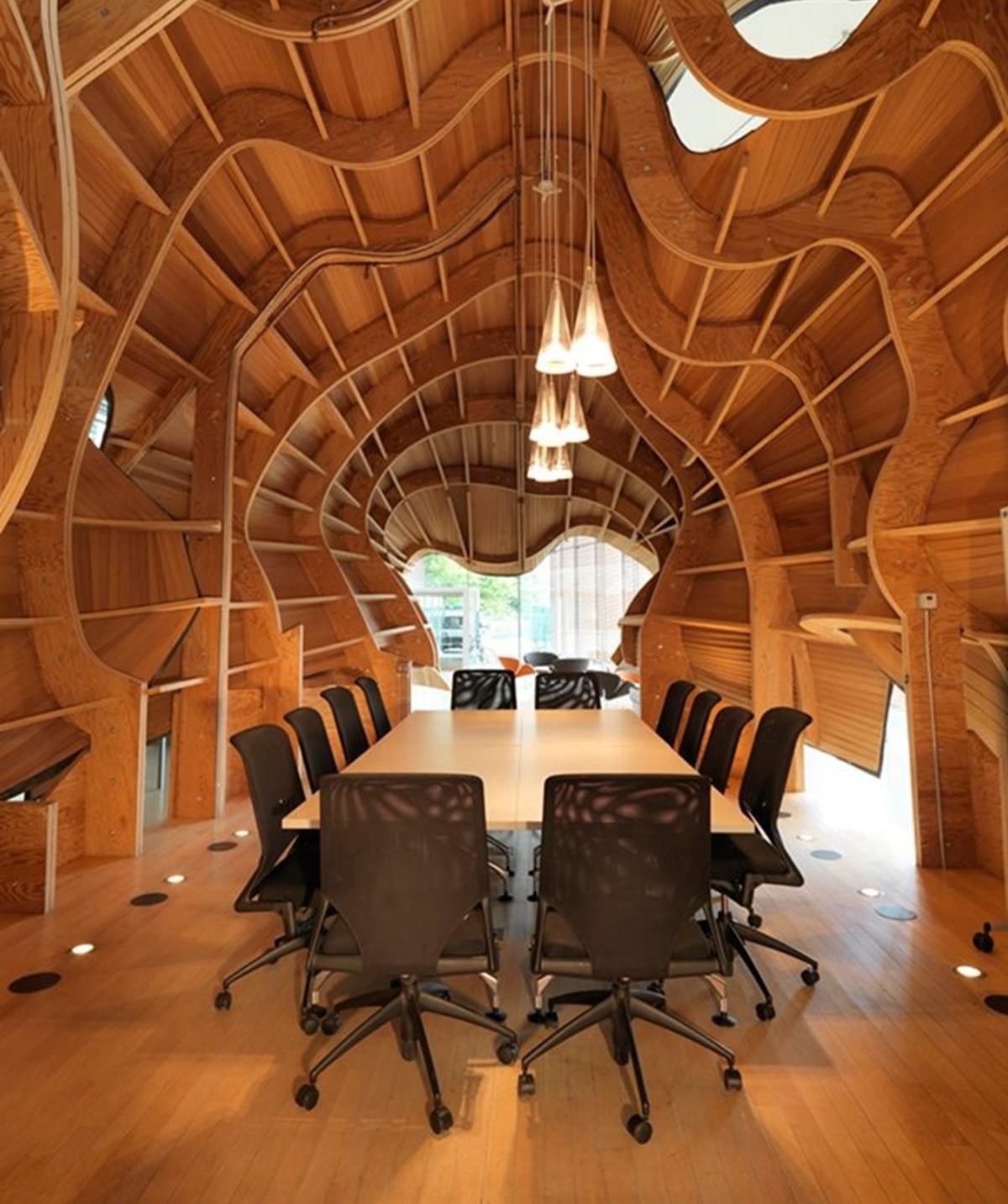To share your laptop screen with a room full of people, you basically have three options: 1) hook your laptop up to a TV or projector using an HDMI, VGA, DVI, or Thunderbolt cable and/or adapter, 2) ask everyone in the room to awkwardly huddle around you, or 3) share your screen wirelessly.
The first option has been the go-to solution since the 90s and it works fairly well, except for one thing: In today’s BYOD environment, hooking a laptop up to a TV isn’t so easy. Laptops come with so many different outputs that you’ll need to have at least a dozen different cables on standby to accommodate them all. It should go without saying that a conference room with dozens of wires strewn across it is not only an eyesore, but due to the tripping hazards associated with cables, also a palm, elbow, and face sore as well.
Some businesses attempt to deal with this problem by hiring an AV installation company to drill wires through the conference room table and put cable management boxes and connectivity boxes at each seat.
In addition to being costly and time-consuming (an AV installation can leave your conference out of commission for several days), this solution is also a little near-sighted. Who’s to say what ports end users will need in 5 years? Thunderbolt 5? USB 7? HDMI 4? Will they even have ports at all? Companies that go this route may as well make “Conference Room Table Cable Management Expert” a full-time salaried position.
This is where the Ubiq Hive enters the picture. It only takes 5 minutes to set up and costs a fraction of an AV installation. All that’s required of the IT department is to: 1) Take the Hive out of the box, 2) Hook the Hive up to the TV or projector and to the company’s LAN, 3) Hold down on the power button.
When we say that it only takes 5 minutes to set up, there’s a good chance that we’re being overly cautious. The below video explains everything you need to know in just 57 seconds.
Once the device is up and running, your end users can begin presenting. For internal users, only one action is required—going to www.goubiq.com/downloads and downloading the app. This is a fairly self-explanatory task, but we made a quick video (27 seconds long) explaining how to do it anyway.
For guest users, the process is almost identical. The only difference is that guest users go to a different url (www.goubiq.com/guest) to download the app. The below video is basically the same as the one above, except we swapped in a different title card for the section where the url is displayed. We will not be offended if you decide to skip it.
(Alternatively, both guests and internal users can just use our browser-based solution at https://present.goubiq.com/).
Once the end users have connected their devices to the Hive, the IT department can monitor the Hive remotely through the Ubiq dashboard. To do this, go to https:dashboard.goubiq.com and login with the credentials that were sent to you in an email with the subject heading “Dashboard Credentials.”
The dashboard also comes with a bunch of other features that you can play around with. The two videos below will walk you through each of these features step by step.
In addition to solving all of your screen sharing issues, the Ubiq Hive will also solve all of your digital signage issues as well. If you want to optimize your conference room displays when meetings aren’t in session by showing videos, stills, or websites, the below video will show you how it’s done.
To book a free trial of our product, please click here.
ADDITIONAL READING
Conference Room Technology: 5 Investments You Should Make
Top 10 Conference Room Cable Management Fails of 2016
Meeting Room Setup in 1 Day
Want to set up a wireless Conference Room?Try Now


